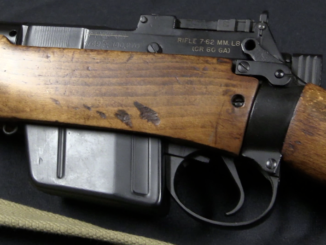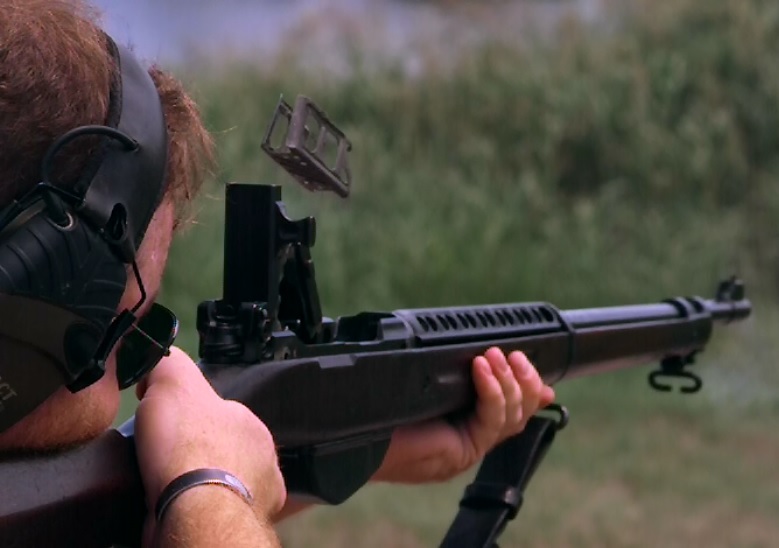Once Lee-Metford rifle production was in place, the British began working on a carbine version of the same action for their cavalry. In 1893 a trial run of 100 carbines were made, and today we are looking at serial number 32 of that batch. These carbines different in several ways from the ultimately adopted pattern. They had exposed muzzles like the Martini carbines, instead of the heavy snub-nose muzzle that would be adopted (similar to the muzzle of most early Mauser carbines). These trials carbines also had no safety, no sling attachments, and no barrel band. The did have the bent bolt handle of the final pattern (albeit not flattened down) and the short 6-round magazine.
Related Articles

Bolt Action Rifles
7.62mm Rifle L8: The Last Gasp of the Service Lee Enfield
After the British adopted the FAL as the L1A1 rifle, there was still an interest in converting stocks of existing No4 Enfield rifles to the new 7.62x51mm cartridge for reserve and training use. A conversion […]

garand development
Slow Motion: .276 Pedersen Rifle (Video)
I have assembled all the slow motion footage from my Pedersen shooting session into its own standalone video, for the folks who are interested. This does also include a malfunction that we caught on camera […]

Needlefire
Q&A Video, November 2015
November 6, 2015
Ian McCollum
Needlefire, Paper cartridge, Percussion, Revolver, Semiauto pistol, Video
17
Thanks to the awesome people supporting Forgotten Weapons through Patreon for sending in more questions that I could get to for another month! This month the subjects include: Browning lock vs others in handguns Best […]

I have to wonder how many actual cavalrymen thought giving up magazine capacity for carrying convenience was a good trade.
Especially when the standard magazine only projects about as far down as the TG, less so than the toe of the stock, and thus doesn’t actually increase any dimension of the rifle.
At 6 rounds the magazine was still bigger than nearly all other countries were issuing with rifles for their infantry.
It is unlikely that this is somehow related to the “wearability”.
Rather, the heavier magazine was breaking its retainer.
Or “jumped out” when shooting.
If we consider the magazine being made mostly of heavy-duty solid forged steel pieces, this is no surprise. Either you beef up the retention system or reduce magazine mass (and capacity). Please do not suggest the use of plastic magazines in that era, polymers of the time (if there were any) weren’t up to the task of making rifle magazines for the rather bash-crazy environment of war. I could be wrong.
What a sweet little stalking carbine! I wonder if any of the carbine patterns were made as “ground-up” civilian sporters? I’ve seen a number of Lee-Metford rifles that had been made for private sale.
GHOST AND THE DARKNESS rifle?